3 August, 2023
With the forest fires raging in Greece and weeks of record-breaking heatwaves spreading across Europe and afar, no one can deny that the climate crisis hasn’t really ramped up the weather.
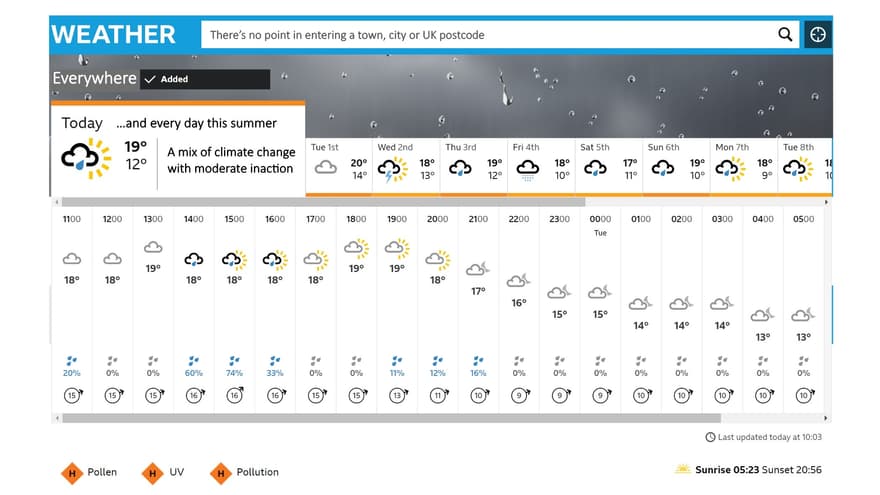
Clearly, the extreme temperatures felt in July and August last summer in the UK were not just a blip. In fact, the Met Office has issued a statement to say that the extraordinary temperatures felt in the UK last year will be regarded as being a ‘cool’ year by the end of the century. It looks like this year we have once again swapped the once traditional mild and slightly disappointing British summer for something more dramatic. We started with an absolute deluge of rainstorms and high winds which brought some areas of the country more rainfall in a weekend than expected in an entire month. And as we finish July we seem to be starting a trend of having warmer days but with some still surprisingly persistent rain showers that seem to come from nowhere.
Although no one would want to trade any of our overcast days of recurring drizzle for the extreme heat experienced abroad, the unpredictable weather makes it difficult for anyone trying to make plans to exercise and enjoy the outdoors. Because even if you’ve woken up to a forecast of bright sunshine, you simply cannot count on the weather lasting the morning. For runners, the rising temperatures and flooded trails make it difficult to know exactly what you’ll face en route and how to prepare for it.
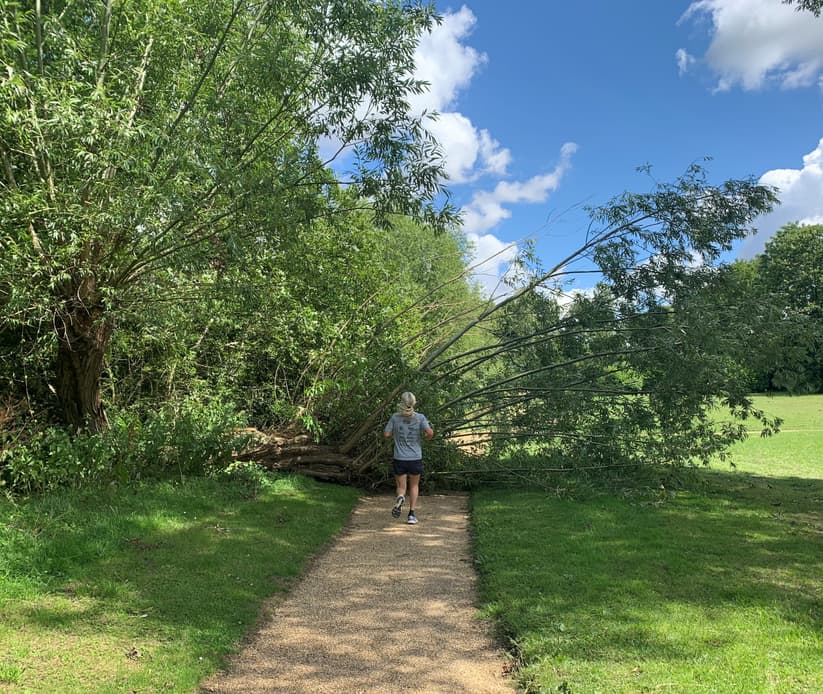
Simply put, dressing for a run in a summer full of days of intermittent rain, climbing temperatures and sticky high humidity can be tricky. When the skies look like they are threatening to open during a workout many runners decide to hedge their bets by reaching for a raincoat as they dash out the door. But after running for only a couple of kms you can soon start to steam up in even the most breathable high spec jacket. Before long, you can become so unbearably hot and sweaty that you might feel as if you were running in the Marathon des Sables. With the dark rainclouds still above you, chances are that you also didn’t think you’d need to bring a drink on your run. It’s not surprising when in reality you are trying to avoid getting soggy feet or tripping over fallen branches while staying dry. Which means that halfway through your run you can find that you have already got yourself into a right state. You will not only be soaked through by all of your hot sweat and the rain, but you will also probably be starting to become dehydrated.
If you are on a shorter run and the rain eases off, at worst, you will have to run back home with a heavy sodden jacket as you hope to dry off. But although you may have been pretty uncomfortable and thirsty while running, there’s probably no real harm done. However, if you happen to be out on a long run and much further away from home, you will spend considerably more time running in what might not be the best choice of kit. If the sun comes out again and really begins to flex its muscles you will feel the temperature soar. You will not only be starting to overheat in your raincoat but if you remove it, you might not have thought to have put on any sun protection. Because why would you have done so when you were dressing for the rain? And without a sunhat or drink you will be getting thirstier and more dehydrated by the minute. If you are out for too long, it can get a bit more serious and things can quickly go from bad to worse. It’s not just sunburn you have to think about. You could even be at risk of heat exhaustion and heatstroke. Not exactly something that you would have expected to face when you woke up to a rainy forecast.
And that is precisely the problem. Since climate change has increased the intensity and unpredictability of the summer weather, runners need to readjust to what they would normally expect to wear and bring with them. After all, everyone wants to enjoy the great outdoors feeling comfortable and stay safe. Which is why it is worth reflecting on some new rules for summer running.
1. Dressing for the heat is no sweat
Even if the forecasted temperatures are predicted to be lower than normal, it is worth reminding yourself that you will warm up quickly as you run. So wear light loose materials that are breathable and are sweat-wicking to stay cool and prevent any chaffing. If you really think you may need to wear an extra layer for some initial warmth then pick something that you can also easily remove and wrap around your waist comfortably. Don’t forget that your feet will also warm up sooner in the heat. Stick to wearing thinner socks that you know won’t rub your toes to stop them overheating and causing blisters.
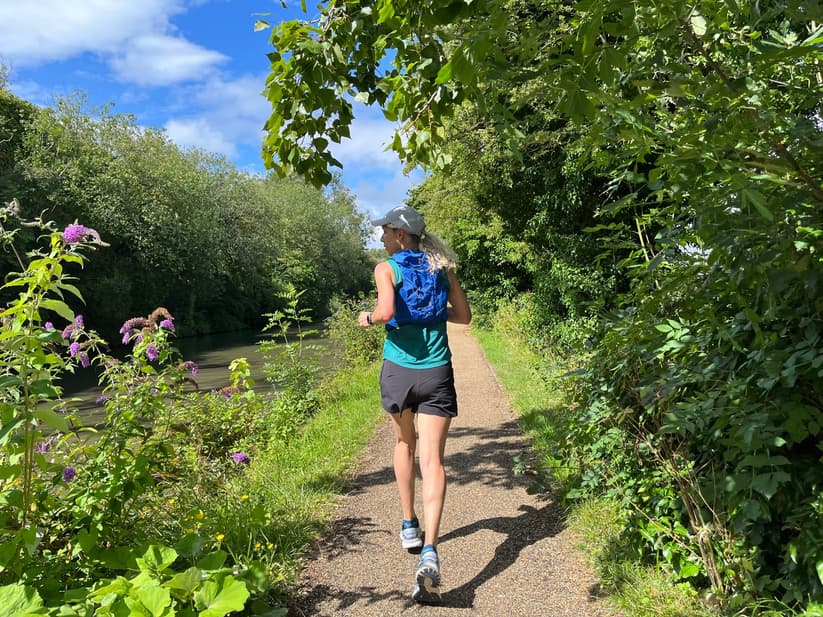
2. Run rain and shine
Despite using several competing weather apps to check the daily forecast, I cannot count the number of times I have been unexpectedly rained on while out running. Which is why it is always safer to regard forecasts as being overly optimistic. Because unless there is 0% chance of precipitation you might as well count on getting a little rain at some point. Now if you are going for a short run and don’t mind getting wet then carry on in whatever kit you are happy running in. But if on the other hand, you prefer to stay relatively dry or you have a long run ahead of you, it makes sense to be prepared.
If you believe from all the information you have at hand that the rain will be relatively light or there might just be the odd short drizzle then it is worth investing in a thin waterproof gilet. Clearly, by definition, a gilet only covers your chest and normally doesn’t have a hood. Which means that your arms and head could potentially get soaked. But if it’s warm outside most people don’t mind their arms getting a bit splashed and you can always top the gilet with a good running hat that has a brim. A cap can shield the rain (and the sun) surprisingly well and keep your head dry. There are even some waterproof versions available (although they may not feel as breathable).
Effectively, what you lose in coverage from wearing a waterproof gilet you will gain in comfort from not overheating. Gilets can also provide a little warmth on a cooler morning. Although it is worth noting that if you want to remove it later on a run there isn’t any easy way other than carrying it in your hand to get it home.
If, however, you are relatively certain that you will be running in very heavy rain and you prioritise keeping dry above everything else then by all means wear a good but ideally very light waterproof raincoat that is also breathable. But do yourself a favour by wearing it over your thinnest, coolest singlet and be prepared to sweat.
3. Here comes the sun
We may be very good at packing the suncream whilst on holiday but somehow, not all runners remember to put on sun protection at home. Especially if they routinely run outside throughout the year, as if it somehow hardens you up. Unfortunately, the evidence shows that runners and particularly those who train for longer endurance distances such as marathons have a higher risk of developing skin cancer because of the amount of time they spend exposed to UV rays while training outdoors. And as much as having a slight tan is still seen as something to aspire to, there is no doubt that it actually damages our skin rather than protect it.
However, not many people enjoy the sensation of wearing a sticky suncream whilst running outside. Especially when some of them seem to serve a dual purpose as a powerful bug magnet. However, there are plenty of different types and brands to choose from and it’s just a matter of finding one that you can get on with. It’s also worth remembering that many moisturisers now routinely contain a sun protection factor. Always choose a minimum factor of 15 SPF that has a 4 or 5 star UV rating and put on a much higher factor if you know that you will be outside for some time.
To protect yourself further from the sun (and unexpected rain) wear a running hat with a brim that is made from a light, breathable fabric. There are some hats on the market that are also sweat-wicking or have UV protection. Lastly, if possible, avoid running outside during the hottest time of the day between 11am-3pm when the sun’s UV rays are the strongest. If you can’t avoid these times then try to plan a route that includes some shaded areas.
Always bring a drink
Even if the weather looks miserable outside, do not make the mistake of believing that you won’t get thirsty on a summer run. Especially if you will be out there for some time. Be strategic and route your run past someplace where you know you can easily get a drink, such as a water fountain. If you are running an out-and-back route you could also leave a drink en route where you know you could pick it up later. If you won’t have access to a drink or you are running a looped course then your only choice is to carry a drink in your hand or by wearing a running vest.
In terms of what to drink for a summer run, water is the obvious choice because it does the job of keeping you hydrated without causing GI issues and it is kind to your teeth. However, if it is really sweltering out there then using an isotonic drink containing electrolytes can also help prevent dehydration. Essentially drinks containing electrolytes in the form of mineral salts will increase your thirst and help to encourage you to drink a sufficient amount of fluids to avoid dehydration.
It is also worth remembering that regardless of the weather, for runs that are longer than 90min, your drink should also include some carbohydrates. This is important because you will need to replace the energy you’ve used up exercising that was previously stored as glycogen in your muscles. It will help to prevent you from experiencing low blood sugar and from ultimately hitting the proverbial wall.
Hopefully, these new rules for summer running will prompt a rethink before you head out the door. After all, there is no doubt that climate change has shifted our weather patterns for the worse. I just wonder how much longer in the future it will be true that ‘There's no such thing as bad weather, only unsuitable clothing’?
I am originally from Canada but I settled in the UK after studying at university. Sports have always been a part of my life and I have participated and competed in several throughout my childhood. But today I would describe myself as mostly a runner, a mother of 3 grown-ups and a keen cook. As a teenager I was a sprinter and a slightly reluctant cross-country runner but while my children grew up I started to run further and further distances. I never thought that I could ever run anything longer than a half marathon but when my runner husband decided to do a marathon for his 50th in 2019 I found that I had a serious case of FOMO. My children encouraged me to sign up for my first marathon and I ran it just to see if I could finish. Somehow my time was good enough to qualify for the Boston 2020 Marathon. However, due to Covid it was postponed several times.
Like many other runners, I spent much of my time in the Covid lockdown keeping up my fitness by participating in virtual races while waiting for the real events to start up again. As time went on I found myself becoming fully immersed in the world of endurance running and ran the Threshold Trail Series ultra, Race to the Stones. Unfortunately, by the time the Boston Marathon was finally held in late 2021, I could not go because US travel restrictions were still in place. Although I missed my chance to run it and will now have to requalify again at least my time spent keeping in good shape wasn’t wasted. These days I participate in everything from half marathons up to ultras and have also run the Great Glen Way and West Highland Way in the Scottish Highlands.
I also work as a Registered Nutritionist with children and families and founded the consultancy Just add water® in 2019. I write a blog at https://justaddwaterblog.com/ to give free information and advice about nutrition and running whilst also sharing some of my favourite healthy recipes. The website is mainly aimed at busy families who want to make easy to prepare meals that are both healthy and really tasty, and for active families who want to know what they should be eating before, during and after playing sport.
I have always enjoyed cooking and previously cooked as a profession and I like to share my passion for good food. I have been involved in teaching cookery in schools, children's centres and for the NHS. I also enjoy entering the odd competition to push myself out of my comfort zone. I was awarded Highly Commended at the Teflon™ Diamond Standard Awards 2020 national culinary competition in the category of Keen Home Cook and was a National Finalist in 2022 & 2019. I have also had my recipes published in The Guardian's supplement, Cook; and featured in the 2012 Waitrose LOVE life calendar (July); and selected for inclusion in the 2020 #AnyWhichWayaBix Weetabix recipe book.
Most recent articles by Suzanne Anderegg

The summer is coming…but why do so many runners still try to outrun their thirst?
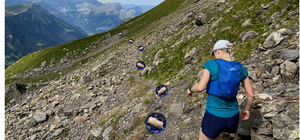
Most adults know that food shouldn’t be used as a reward for our children’s achievements but for some reason we don’t think that this applies to ourselves. Especially among endurance runners because sometimes good food can be the best motivation to carry on.
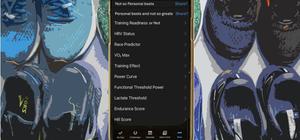
Runners can get a bit obsessed about achieving their Personal Best but there’s more to a PB than simply stats.
Most recent articles in RUNNING

Why is diet such a contentious topic in ultrarunning and why do I call it a myth? These are the topics that I will discuss in this article.

In my last piece for Outside & Active, I talked about what I believed the worst mistake a runner could make is.

Brooks supports trail runners to defy limits and empower their trail runs with the new Cascadia 18. The adaptable Cascadia combines DNA Loft v2 cushioning with TrailTack Green grip and a durable upper mesh to handle all terrains, providing necessary comfort and underfoot security on each surface.